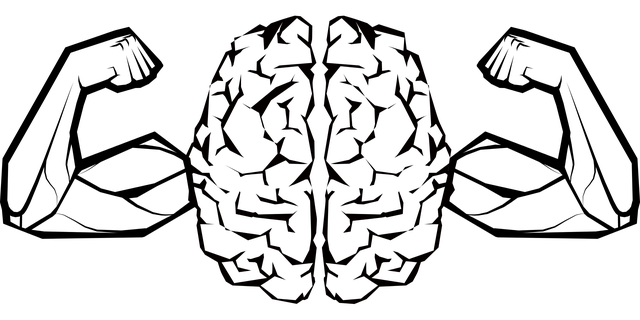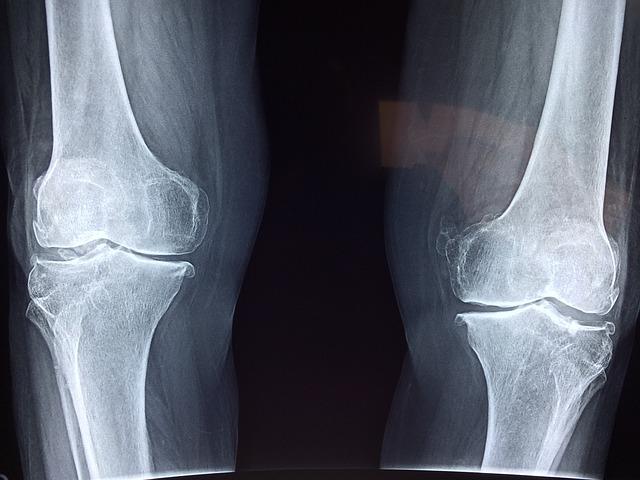1. Introduction
2. The Benefits of Walking
3. How Walking Improves Fitness
4. Walking and Brain Function
5. The Relationship Between Walking and Strength
6. Tips for Effective Walking
7. Incorporating Walking into Your Daily Routine
8. Walking vs. Other Forms of Exercise
9. Walking and Weight Management
10. Walking for Mental Health
11. The Social Aspect of Walking
12. Staying Motivated
13. Common Myths about Walking
14. Conclusion
15. Frequently Asked Questions (FAQs)
Do you want to improve fitness, strength and brain function?
Are you looking for a simple, effective, and enjoyable way to improve your fitness, boost your strength, and enhance your brain function? Look no further than a pair of comfortable walking shoes and a commitment to taking regular walks. Walking, often underestimated in the world of fitness, holds a multitude of benefits that can have a profound impact on your physical and mental well-being. In this article, we will delve into the various aspects of walking and how it can help you achieve your fitness and health goals.

The Benefits of Walking:
The benefits of walking are numerous and encompass physical, mental, and emotional well-being. Here are some key advantages:
Physical Fitness: Walking is a low-impact exercise that helps improve cardiovascular health, maintain a healthy weight, and strengthen muscles and bones Harvard Health Publishing.
Mental Clarity: Regular walks have been shown to boost cognitive function, enhance memory, and reduce the risk of cognitive decline, potentially lowering the risk of conditions like Alzheimer’s disease Alzheimer’s Association.

Mood Enhancement: Walking triggers the release of endorphins, reducing stress, anxiety, and depression, and providing an overall mood lift Mayo Clinic.
Weight Management: Incorporating walking into your routine can assist with weight loss or maintenance by burning calories and regulating appetite National Institute of Diabetes and Digestive and Kidney Diseases.
Joint Health: Unlike high-impact activities, walking is gentle on joints and can alleviate joint pain while promoting flexibility Arthritis Foundation.
Improved Sleep: Regular physical activity, such as walking, can help with better sleep patterns and the overall quality of sleep Sleep Foundation.
Social Connection: Walking with friends or in groups provides a chance for social interaction, strengthening relationships, and reducing feelings of isolation Psychology Today.
Longevity: Studies suggest that walking may contribute to a longer lifespan by reducing the risk of chronic diseases and promoting overall health American Heart Association.
Incorporating a daily walk into your routine can have a profound impact on your overall health and well-being. Always consult with a healthcare professional before beginning a new exercise program, especially if you have underlying health concerns.
How Walking Improves Fitness:
Walking is a great way to improve your overall fitness. While it may seem less intense than some other forms of exercise, consistent walking routines can lead to significant improvements in your physical well-being. It engages various muscle groups and gradually increases your stamina. You can tailor your walking routine to your fitness level, making it suitable for everyone. This note outlines how walking enhances fitness, supported by references from reputable sources.
Cardiovascular Health: Walking is a moderate-intensity aerobic exercise that elevates the heart rate. It improves cardiovascular fitness by strengthening the heart muscle, enhancing blood circulation, and reducing the risk of heart disease. According to the American Heart Association, regular walking can help lower blood pressure and cholesterol levels, which are key factors in heart health American Heart Association.
Weight Management: Walking is a simple way to burn calories, making it an effective tool for weight management. It can assist in both weight loss and weight maintenance by increasing daily energy expenditure. The National Institute of Diabetes and Digestive and Kidney Diseases highlights how walking contributes to weight control National Institute of Diabetes and Digestive and Kidney Diseases.
Muscular Strength and Endurance: Although walking is a low-impact exercise, it engages various muscle groups, particularly the legs, buttocks, and core. Over time, regular walking can lead to improved muscular strength and endurance. It’s an excellent way to maintain muscle tone and flexibility Harvard Health Publishing.
Bone Health: Weight-bearing exercises like walking stimulate bone remodeling and density, reducing the risk of osteoporosis and fractures. The Arthritis Foundation emphasizes how walking can support joint and bone health, particularly in older adults Arthritis Foundation.

Respiratory Efficiency: Walking increases lung capacity and oxygenates the body. This enhances overall respiratory fitness and the body’s ability to efficiently transport and use oxygen. The American Lung Association encourages walking as a way to improve lung health American Lung Association.
Stress Reduction: While not directly related to physical fitness, the stress-reducing benefits of walking have a positive impact on overall well-being. Reducing stress can help prevent stress-related health issues, further contributing to your fitness Mayo Clinic.
Daily Walking Schedule:
Morning Walk (15 minutes): Start your day with a short, brisk walk. This helps wake you up, gets your blood flowing, and prepares you for the day ahead.
Lunchtime Walk (20 minutes): Take a break during your lunch hour for a refreshing walk. It’s a great way to clear your mind, reduce stress, and boost energy.

Afternoon Walk (15 minutes): Another short walk in the afternoon can help combat the midday slump and increase productivity.
Evening Walk (30 minutes): Your longest walk of the day can be in the evening. It’s an excellent opportunity to unwind, reflect on the day, and enjoy some fresh air. You can choose a route that you find particularly relaxing.
Before Bed Stroll (10 minutes): A gentle stroll before bedtime can help you relax and prepare for a good night’s sleep.
Notes:
-
- Aim for a minimum of 10,000 steps a day for overall health. This schedule provides a good foundation to reach that goal.
- Maintain a brisk pace, where you can comfortably hold a conversation but still feel a bit challenged.
- If you’re a beginner, you can start with shorter durations and gradually increase them over time.
- Incorporate some stretching before and after your walks to prevent muscle tightness and injury.
- Ensure you have comfortable footwear, stay hydrated, and consider bringing a friend or listening to music or podcasts to make your walks more enjoyable.
- Remember, the most important thing is to establish a routine that works for you and is sustainable. Listen to your body and make adjustments as needed to ensure that walking becomes a regular and enjoyable part of your daily life.
Walking and Brain Function:
Walking profoundly impacts brain function, as various studies emphasize its cognitive benefits. Consistent physical activity, including walking, enhances memory, attention, and overall cognitive performance. This improvement primarily results from increased brain blood flow, which delivers essential nutrients and oxygen, fostering the growth of new neurons and synapses. Moreover, walking prompts the release of neurotransmitters like endorphins and serotonin, reducing stress and anxiety while uplifting mood. These neurochemical changes can alleviate depression’s effects and enhance mental clarity. Furthermore, walking provides an opportunity for relaxation and self-reflection, fueling creativity and problem-solving. Its low-impact nature makes it accessible to people of all ages and fitness levels, serving as a straightforward yet effective method to enhance brain function and overall mental well-being.
The Relationship Between Walking and Strength:
While walking is a predominantly cardiovascular exercise, it also engages several muscle groups. Uphill and brisk walking, in particular, can help tone your leg muscles and strengthen your core. Adding light hand weights or incorporating resistance bands can further enhance the strength-building aspects of your walk.
Tips for Effective Walking:
-
- Maintain Proper Posture: Stand tall with your head up, shoulders back, and abdomen tucked in. Good posture ensures efficient breathing and reduces the risk of strain or injury.
- Choose the Right Footwear: Invest in comfortable, supportive shoes with proper arch support. The right footwear can prevent blisters and provide cushioning for your feet.
- Warm-Up and Cool Down: Start with a few light stretches to warm up your muscles before you begin walking. After your walk, do some gentle stretches to improve flexibility and prevent stiffness.
- Stay Hydrated: Bring a water bottle with you, especially on longer walks. Staying hydrated is crucial for overall health and helps prevent fatigue.
- Set Realistic Goals: Whether you’re walking for fitness or leisure, set achievable goals. Gradually increase the duration or intensity of your walks as your fitness improves.
- Brisk Walking: Aim for a brisk walking pace where you can still carry on a conversation. This helps elevate your heart rate and maximizes the benefits of your walk.
- Vary Your Route: To keep things interesting, change your walking route. Exploring new places can help maintain your motivation and curiosity.
- Use Proper Technique: Swing your arms naturally, take comfortable strides, and land on your heel and roll through to your toe. This promotes efficient movement and reduces the risk of injury.
- Stay Safe: If you’re walking in low-light conditions, wear reflective gear or use a flashlight. Also, be mindful of traffic and adhere to pedestrian rules.
- Listen to Your Body: Pay attention to how your body feels during and after your walk. If you experience pain or discomfort, it’s essential to rest or seek medical advice.
- Add Intervals: Integrate short bursts of faster walking or uphill segments into your routine to challenge your body and improve fitness.
- Track Your Progress: Use a pedometer or a fitness app to monitor your steps, distance, and pace. Tracking your progress can be motivating and help you set and achieve goals.
- Incorporate Walking into Your Daily Routine: Find ways to include more walking in your daily life, like taking the stairs instead of the elevator or walking to nearby destinations.
- Join a Walking Group: Walking with others can be more enjoyable and motivating. Look for local walking clubs or friends who share your interest.
- Practice Mindfulness: Use your walking time as an opportunity to practice mindfulness. Pay attention to your surroundings, focus on your breathing, and clear your mind of distractions.
- By following these tips, you can make your walking routine more effective, enjoyable, and beneficial for your overall health and fitness.
Incorporating Walking into Your Daily Routine:
-
- Maintain Proper Posture: Stand tall with your head up, shoulders back, and abdomen tucked in. Good posture ensures efficient breathing and reduces the risk of strain or injury.
- Choose the Right Footwear: Invest in comfortable, supportive shoes with proper arch support. The right footwear can prevent blisters and provide cushioning for your feet.
- Warm-Up and Cool Down: Start with a few light stretches to warm up your muscles before you begin walking. After your walk, do some gentle stretches to improve flexibility and prevent stiffness.
- Stay Hydrated: Bring a water bottle with you, especially on longer walks. Staying hydrated is crucial for overall health and helps prevent fatigue.
- Set Realistic Goals: Whether you’re walking for fitness or leisure, set achievable goals. Gradually increase the duration or intensity of your walks as your fitness improves.
- Brisk Walking: Aim for a brisk walking pace where you can still carry on a conversation. This helps elevate your heart rate and maximizes the benefits of your walk.
- Vary Your Route: To keep things interesting, change your walking route. Exploring new places can help maintain your motivation and curiosity.
- Use Proper Technique: Swing your arms naturally, take comfortable strides, and land on your heel and roll through to your toe. This promotes efficient movement and reduces the risk of injury.
- Stay Safe: If you’re walking in low-light conditions, wear reflective gear or use a flashlight. Also, be mindful of traffic and adhere to pedestrian rules.
- Listen to Your Body: Pay attention to how your body feels during and after your walk. If you experience pain or discomfort, it’s essential to rest or seek medical advice.
- Add Intervals: Integrate short bursts of faster walking or uphill segments into your routine to challenge your body and improve fitness.
- Track Your Progress: Use a pedometer or a fitness app to monitor your steps, distance, and pace. Tracking your progress can be motivating and help you set and achieve goals.
- Incorporate Walking into Your Daily Routine: Find ways to include more walking in your daily life, like taking the stairs instead of the elevator or walking to nearby destinations.
- Join a Walking Group: Walking with others can be more enjoyable and motivating. Look for local walking clubs or friends who share your interest.
- Practice Mindfulness: Use your walking time as an opportunity to practice mindfulness. Pay attention to your surroundings, focus on your breathing, and clear your mind of distractions.
- By following these tips, you can make your walking routine more effective, enjoyable, and beneficial for your overall health and fitness.
Common Myths about Walking:
Walking is a simple and accessible form of exercise with numerous health benefits, but there are also some common myths associated with it. Let’s dispel these myths and provide accurate information about walking:
Myth: Walking Is Ineffective for Fitness
Fact: While walking may not be as intense as some other exercises, it can be highly effective for improving cardiovascular fitness, burning calories, and promoting overall health. Regular brisk walking can provide significant benefits.
Myth: Walking Doesn’t Aid Weight Loss
Fact: Walking can contribute to weight loss and weight maintenance when combined with a balanced diet. It burns calories and can help create a calorie deficit necessary for shedding pounds.
Myth: Walking Is Boring
Fact: Walking can be as engaging as you make it. You can explore new routes, listen to music or podcasts, or walk with friends to make it a more enjoyable and social activity.
Myth: You Must Walk for Hours to See Benefits
Fact: Even short walks have health benefits. The key is consistency. Aim for at least 150 minutes of moderate-intensity walking per week, which can be broken into shorter sessions.
Myth: Walking Is Only for Older Adults
Fact: Walking is for everyone, regardless of age. It’s a low-impact activity suitable for people of all fitness levels and ages. Even children and young adults can benefit from regular walking.
Myth: Walking Doesn’t Build Strength
Fact: While walking primarily focuses on cardiovascular fitness, it also engages various muscle groups. Uphill or brisk walking can help build leg and core strength over time.
Myth: You Must Walk Fast for It to Count
Fact: Any walking is better than no walking. While brisk walking provides extra cardiovascular benefits, slower-paced walking is still beneficial, especially for those who are just starting.
Myth: There’s No Need for Proper Footwear
Fact: Investing in good-quality walking shoes is essential to prevent injuries, reduce discomfort, and provide proper support for your feet, especially if you’re walking regularly.
Myth: Walking Doesn’t Improve Brain Function
Fact: Walking has been linked to enhanced cognitive function, improved mood, and reduced risk of cognitive decline. The increased blood flow to the brain and the release of neurotransmitters during walking are responsible for these benefits.
Myth: Walking Is Only for Warm Weather
Fact: Walking can be enjoyed in all seasons. Proper clothing and footwear can make walking comfortable and safe in various weather conditions.
Myth: Walking Doesn’t Require a Plan
Fact: While you can walk spontaneously, having a plan or schedule can help you stay consistent and achieve fitness goals. Setting goals, tracking progress, and varying your routes can make walking more effective.
By debunking these common myths about walking, it becomes clear that walking is a valuable and versatile exercise that can contribute significantly to your overall health and well-being. Whether you’re looking to enhance fitness, lose weight, or simply enjoy the outdoors, walking has something to offer for everyone.
Conclusion:
Walking is a versatile and accessible way to enhance your fitness, strength, and brain function. Whether you’re a fitness enthusiast or just starting your wellness journey, walking can be a cornerstone of your daily routine. So, put on your walking shoes and take the first step toward a healthier, happier you.
Frequently Asked Questions (FAQs):
Is walking as effective as other forms of exercise?
Walking offers numerous health benefits and is suitable for people of all fitness levels. While it may be less intense than some other forms of exercise, its accessibility and low risk of injury make it an excellent choice for many.
How often should I walk to see noticeable improvements in my health?
Walking for at least 30 minutes a day, most days of the week, can lead to noticeable improvements in cardiovascular health, mood, and overall fitness.
Can I lose weight by walking alone?
While walking can contribute to weight loss, combining it with a balanced diet is the most effective approach to shedding pounds.
What’s the best time of day to walk for maximum benefits?
The best time to walk is whenever it fits into your schedule and you can commit to it regularly. Consistency matters more than the time of day.
Is there an age limit for reaping the benefits of walking?
No, there’s no age limit. People of all ages can benefit from walking, from children to seniors, and it’s an activity that can be adjusted to individual fitness levels.


